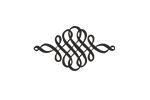When selling your home, it’s natural to assume anything you can safely remove is yours to keep.
The light fixtures you so painstakingly cleaned and repaired (and the fancy appliances you bought just last year) feel very personal; it’s natural to want to take them with you when you move.

But the fact is, your buyer may expect some of those items, too.
To avoid miscommunication—and potential legal problems—down the line, you’ll need to decide in advance which items will stay with the property and which will leave with you when you move.
So, what stays with the house?
Generally, anything installed as a permanent fixture (mounted light fixtures, the dishwasher, fireplace, and wood stove, for example) typically stays with the structure. But there are some exceptions, so if you’re not sure what to do with something, it pays to ask your agent.
To get you started, though, here’s a list of general guidelines:
Built-ins: Built-in bookshelves, benches, and pull-out furniture are generally assumed to be part of the structure; therefore, they stay.
Landscaping: Trees, shrubs, and flowers planted in the ground should stay in the yard. Container plants can be negotiated, but if they’re large and blend in well with the landscaping, the buyer may expect them to stay.
Wall mounts: If you have TV wall mounts or picture mounts that might damage the walls upon removal, it’s a good idea to leave them in place (although, it’s perfectly acceptable to have your agent ask the buyer what he or she prefers. Your buyer may have a TV that requires a different size bracket—or they might not want a TV at all).
Custom-fit items: If you have custom-made curtains, plantation shutters, or blinds, leave them installed. They won’t have a place in your new house, anyway.
Hardware: If you upgraded the knobs and drawer pulls on your cabinets, you can choose to leave them behind or install replacements before you move. If you don’t plan to leave the hardware, replace it before your showing, or disclose the information to the buyer before committing to a contract. It might not seem like a big deal to you, but those pulls might have been the very item that sealed the deal in the buyer’s mind. Don’t inadvertently pull a bait and switch that could get you into trouble at closing.
Alarm systems: Wireless alarm systems are designed to be removed and are typically not expected to remain with the dwelling. Hard-wired monitoring stations, however, should remain attached and intact. Simply transfer or cancel the monitoring service before you transfer ownership of the home.
Smoke detectors: Smoke detectors and sprinkler systems should stay in the home. In many cases, the lender and/or insurance company will require that the home be equipped with smoke and CO detectors, so don’t risk losing the sale—just leave these safety items behind.
What can you take?
While you are expected to leave installed items behind, your personal belongings should leave with you.
Here are some examples of what to take when you transfer the home:
Patio furniture, lawn equipment, and playsets: If you have a wooden swing set in the backyard, and a bistro table on the front porch, take those items with you. Some buyers may consider a playset an “installed” item, so make sure you’ve disclosed its impending removal before you tear it down.
Appliances: As a condition of a home loan, some lenders require that a home have a working oven installed. It’s up to you to decide whether you’ll take the rest of the appliance suite, or offer it up as part of the home. If you’re taking an appliance with you, it’s a good idea to disclose the information to the buyer before committing to a contract.
Some light fixtures: Generally, homeowners leave hard-wired light fixtures behind. But if you’re attached to a certain fixture, you can make arrangements with the buyer to take it—or simply replace it before showing your home, so buyers never even see it.
Built-in kitchen tools: If you can remove a mounted spice rack or pasta arm without damaging the wall, you can take it with you.
Rugs, tab-top curtains, wreaths: Feel free to take small decor items like rugs, spring-loaded curtain rods, and non-custom curtains that can be removed easily without causing damage to the property.
If you’re ever in doubt as to whether an item should stay or go, don’t hesitate to ask your agent. In some cases, a buyer may be willing to pay extra for furniture or décor items they assumed wouldn’t otherwise come with the house.

